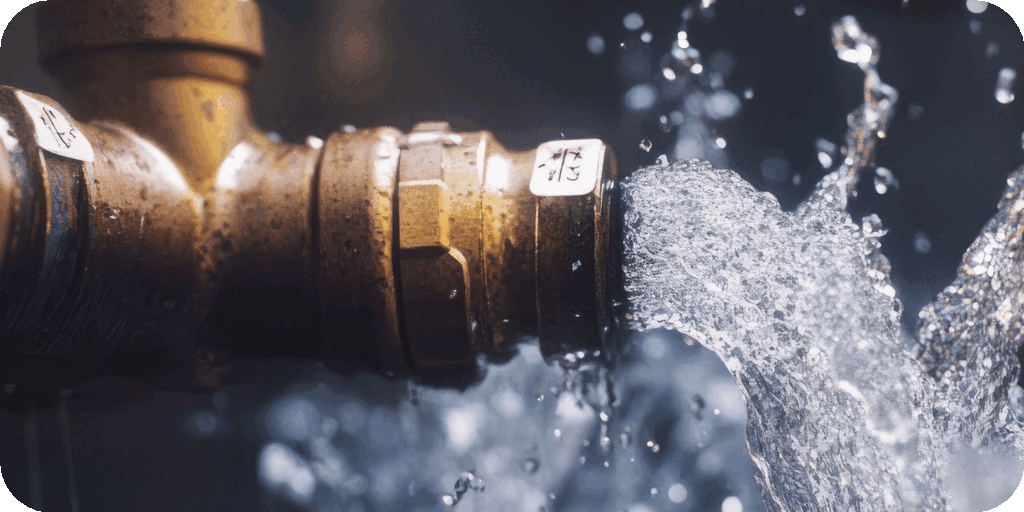
£1.8m in claims a day! The Role of Hard Water and Its Impact on Properties
Insurers pay out over £650m annually due to water escape.
2 APRIL 2025£1.8m in claims a day! The Role of Hard Water and Its Impact on Properties

Insurers pay out over £650m annually due to water escape.
Water escape, or “escape of water,” remains a persistent challenge in the UK, causing significant damage to properties and leading to costly claims for insurers and underwriters. While common causes like frozen pipes and faulty appliances are often cited, another factor—water hardness—can play a critical role in contributing to water escape incidents. In this article, we’ll explore how hard water exacerbates plumbing issues, leading to escape of water, and its broader implications for property insurance.
What is Hard Water?
Hard water contains high levels of minerals, primarily calcium and magnesium. While not harmful to health, hard water can have a detrimental effect on plumbing systems and household appliances over time. The UK, particularly areas in the south and east of England, is known for having hard water due to the chalky geology beneath the surface.
How Does Hard Water Lead to Water Escape?
The mineral content in hard water causes scaling, which can result in the following plumbing issues:
- Pipe Narrowing: Limescale buildup reduces the diameter of pipes, increasing pressure and making them more susceptible to bursts or leaks.
- Weakening of Pipe Joints: The accumulation of limescale around pipe joints and fittings can weaken their integrity, leading to leaks.
- Damage to Appliances: Hard water causes mineral deposits inside boilers, washing machines, and other appliances, which can result in failures and leaks.
- Blocked Systems: Accumulated limescale can obstruct water flow in plumbing systems, increasing the likelihood of pipe bursts or other escape scenarios.
The Importance of Knowing Hard Water Areas
Understanding which areas in the UK are prone to hard water is invaluable for both insurers and property owners. Regions with hard water, such as the south and east of England, are more likely to experience water escape incidents due to scaling and limescale buildup. Tools like postcode-based water hardness maps can help identify these areas. This knowledge enables:
- Targeted Risk Assessment: Insurers can better evaluate the likelihood of claims by factoring in the water hardness of a property’s location.
- Preventative Measures: Property owners in hard water areas can be encouraged to install water softeners or take other steps to mitigate risks.
- Policy Customisation: Insurers can tailor policies to address the specific challenges posed by hard water, ensuring clarity and fairness for policyholders.
Source: DoordaOnline
Estimated Costs to Insurers
Water escape is one of the most expensive types of property damage for insurers in the UK. It accounts for approximately 30% of all home insurance claims costs. According to the Association of British Insurers (ABI) UK insurers pay out an estimated £1.8 million daily for damage caused by water escape incidents highlighting the financial burden on the insurance industry. The rising costs are driven by factors such as increasing repair expenses, more complex claims, and the prevalence of hard water in certain regions.
Impacts on Properties
Water escape due to hard water can have far-reaching effects:
- Structural Damage: Leaks or bursts caused by scaling can lead to water infiltrating walls, ceilings, and floors.
- Damp and Mould: Persistent leaks contribute to damp conditions, encouraging mould growth and creating health risks.
- Efficiency Loss: Appliances and heating systems exposed to hard water become less efficient, requiring costly repairs or replacements.
Considerations for Insurers and Underwriters
Understanding the role of water hardness in escape of water incidents allows insurers and underwriters to refine their risk assessments and policy offerings:
- Geographical Risk Assessment: Properties located in regions with hard water may face higher risks of escape incidents, warranting specific considerations in underwriting.
- Preventative Measures: Encouraging policyholders to install water softeners can mitigate risks associated with hard water. Insurers might consider offering discounts for such installations.
- Policy Terms: Clearly outlining coverage for incidents related to water hardness can prevent disputes and ensure transparency.
- Claims Trends: Monitoring claims linked to water hardness helps insurers identify patterns and adjust premiums accordingly.
Conclusion
While hard water is often overlooked as a cause of escape of water incidents, its role is significant, particularly in areas of the UK prone to high mineral content. For insurers and underwriters, factoring water hardness into risk assessments and promoting preventative measures can improve outcomes for both customers and the industry.
